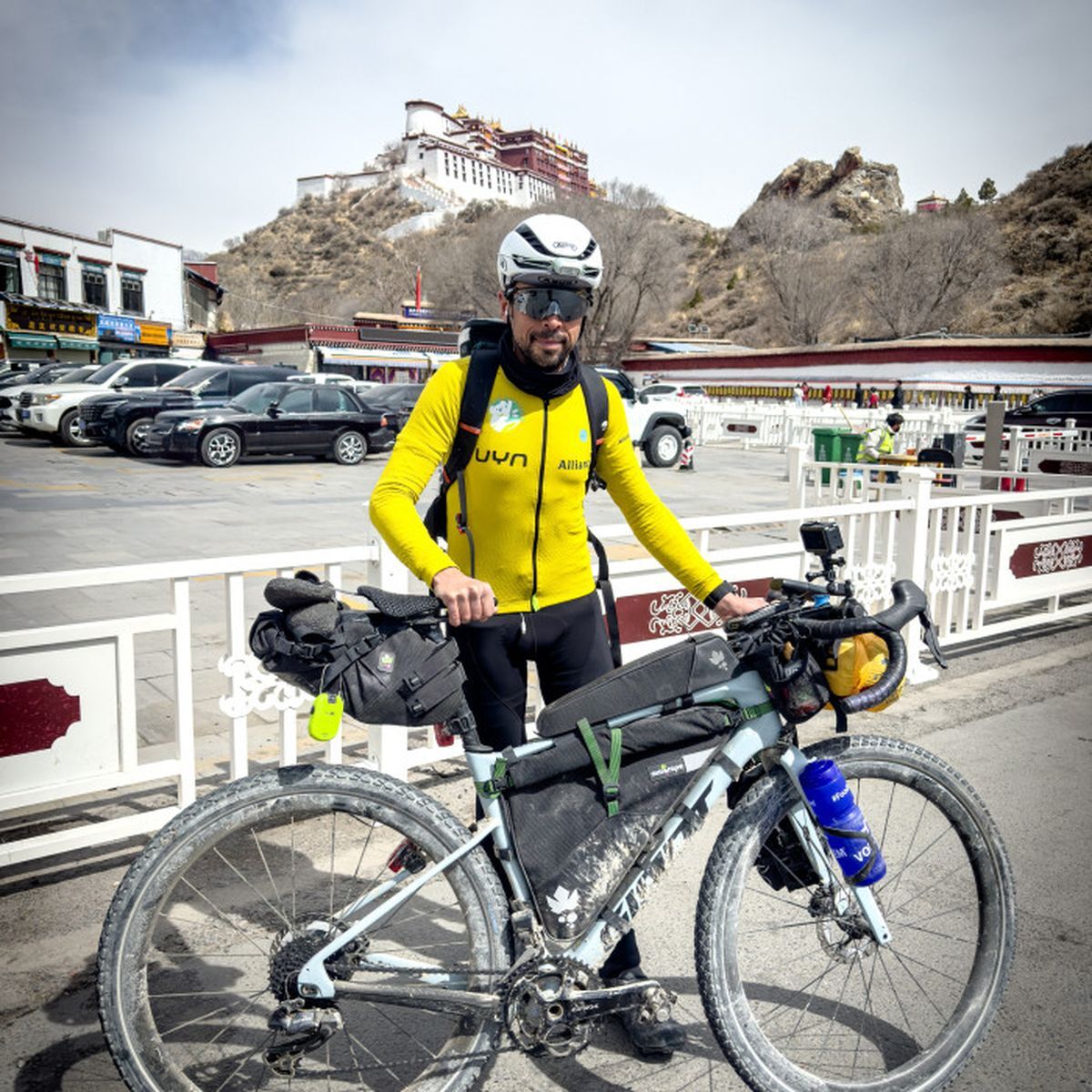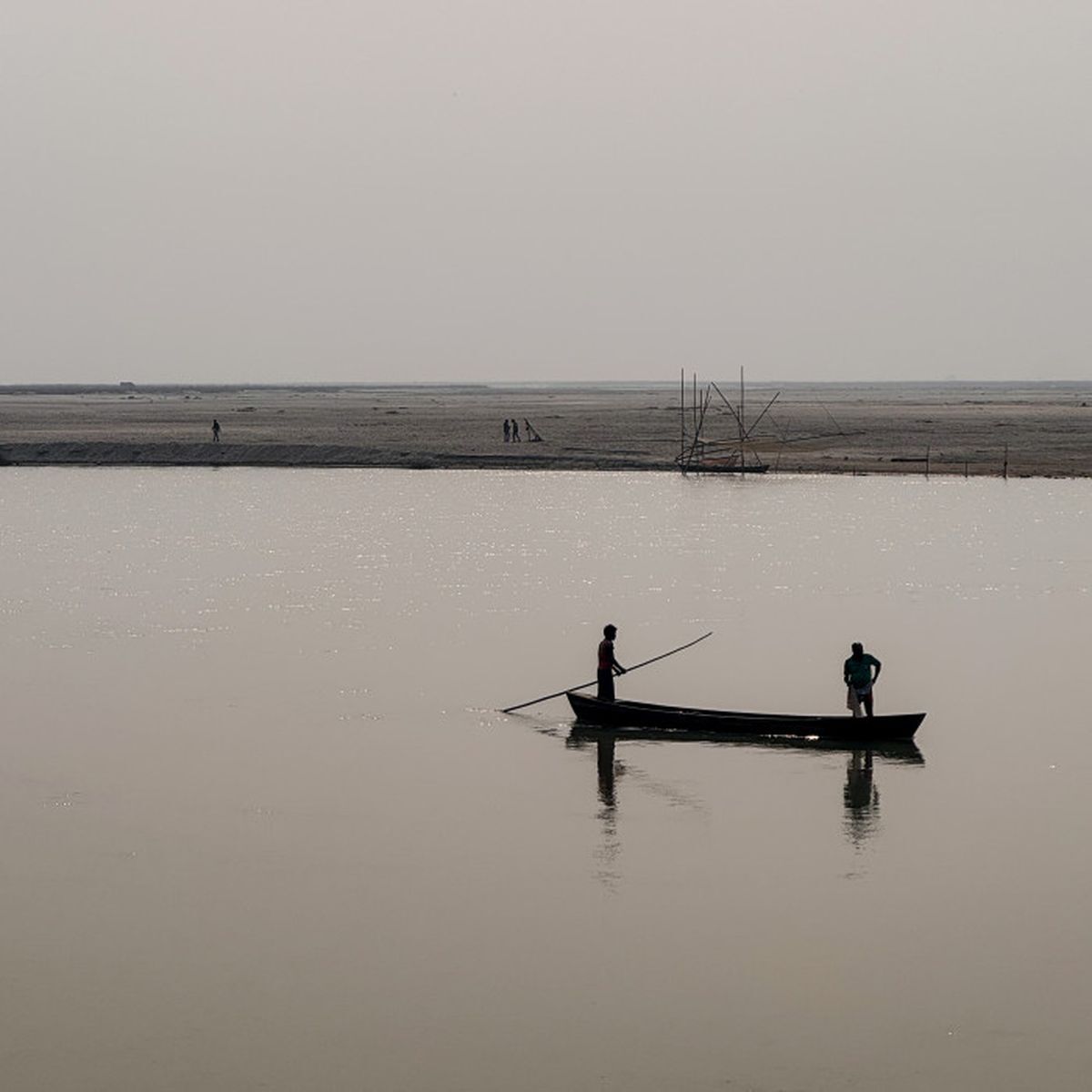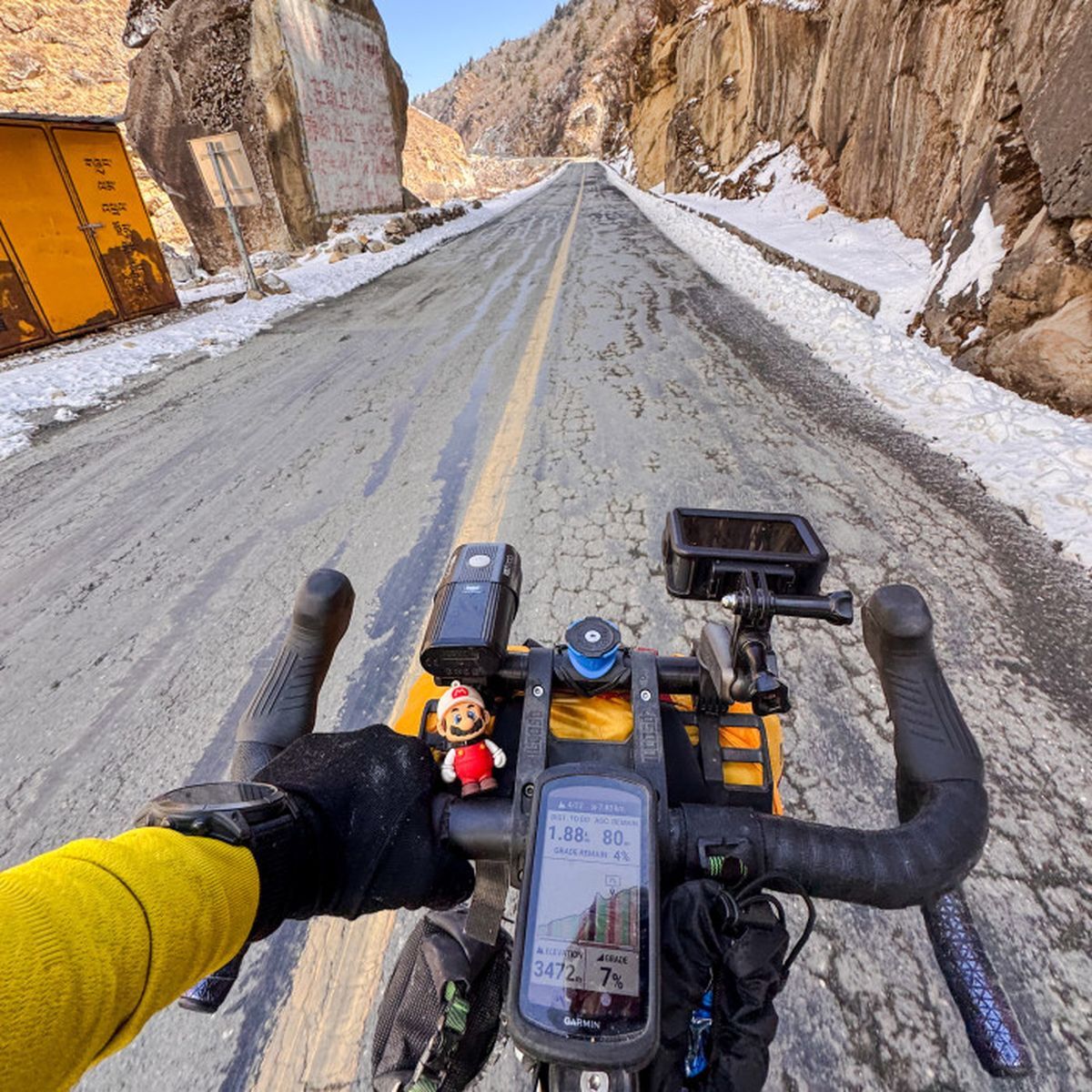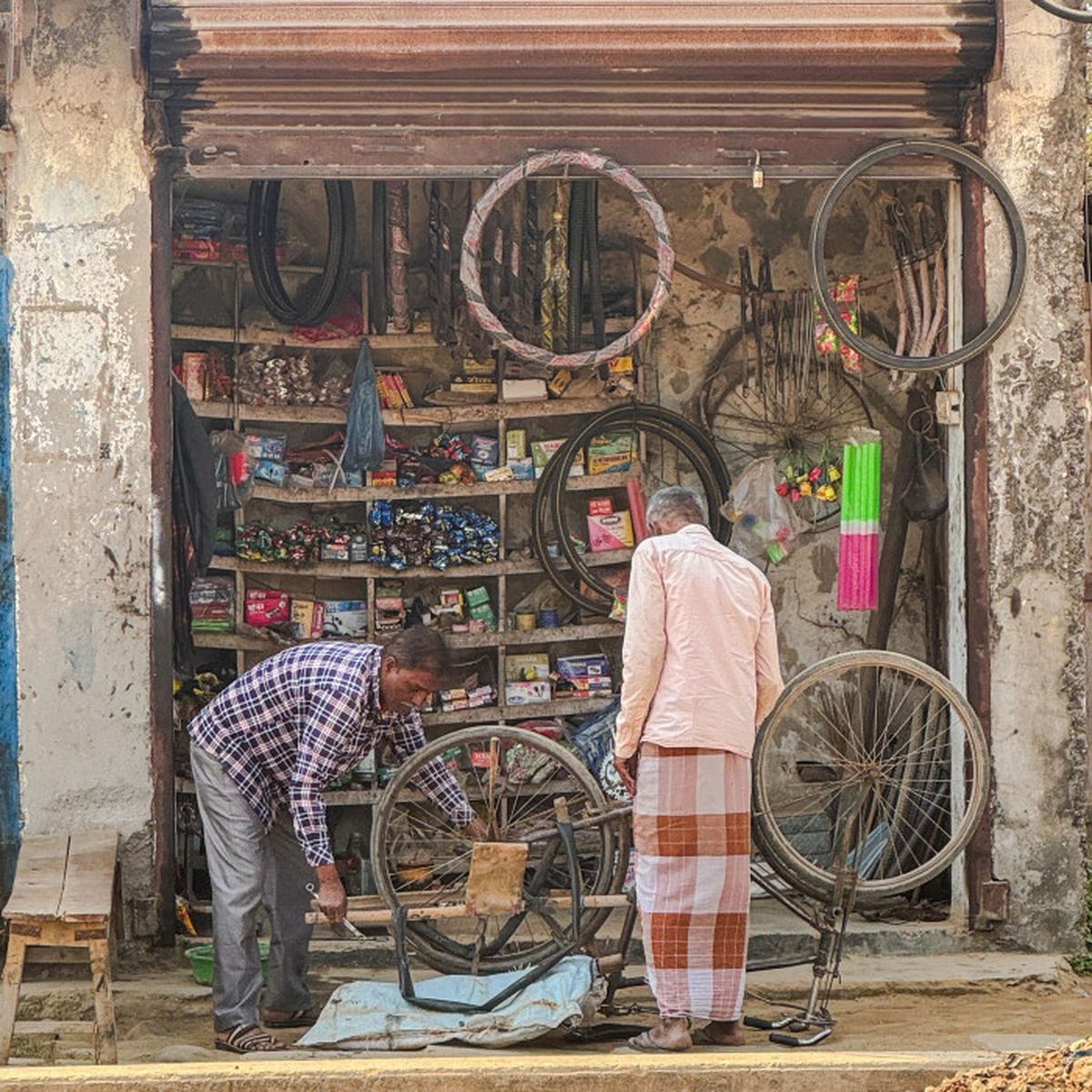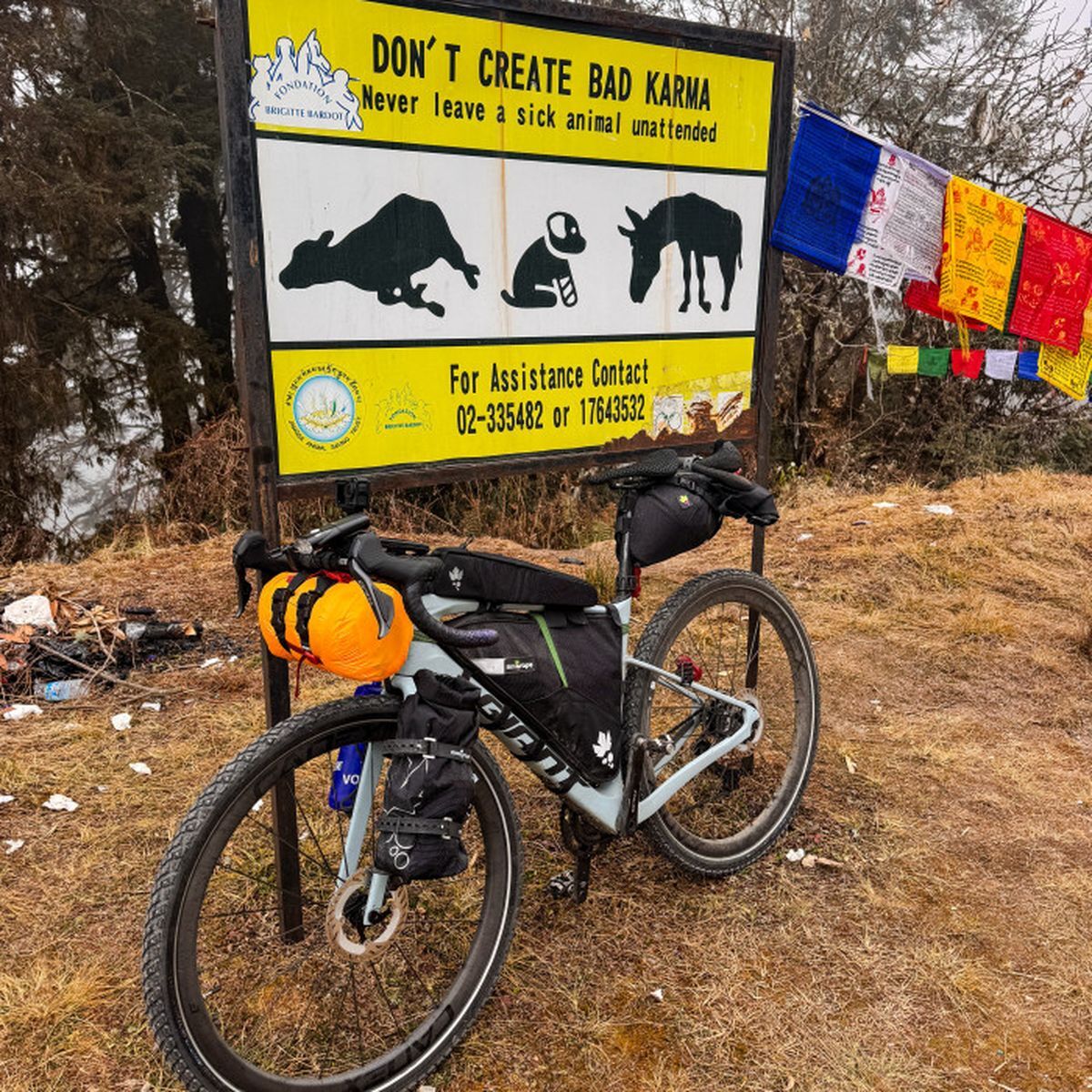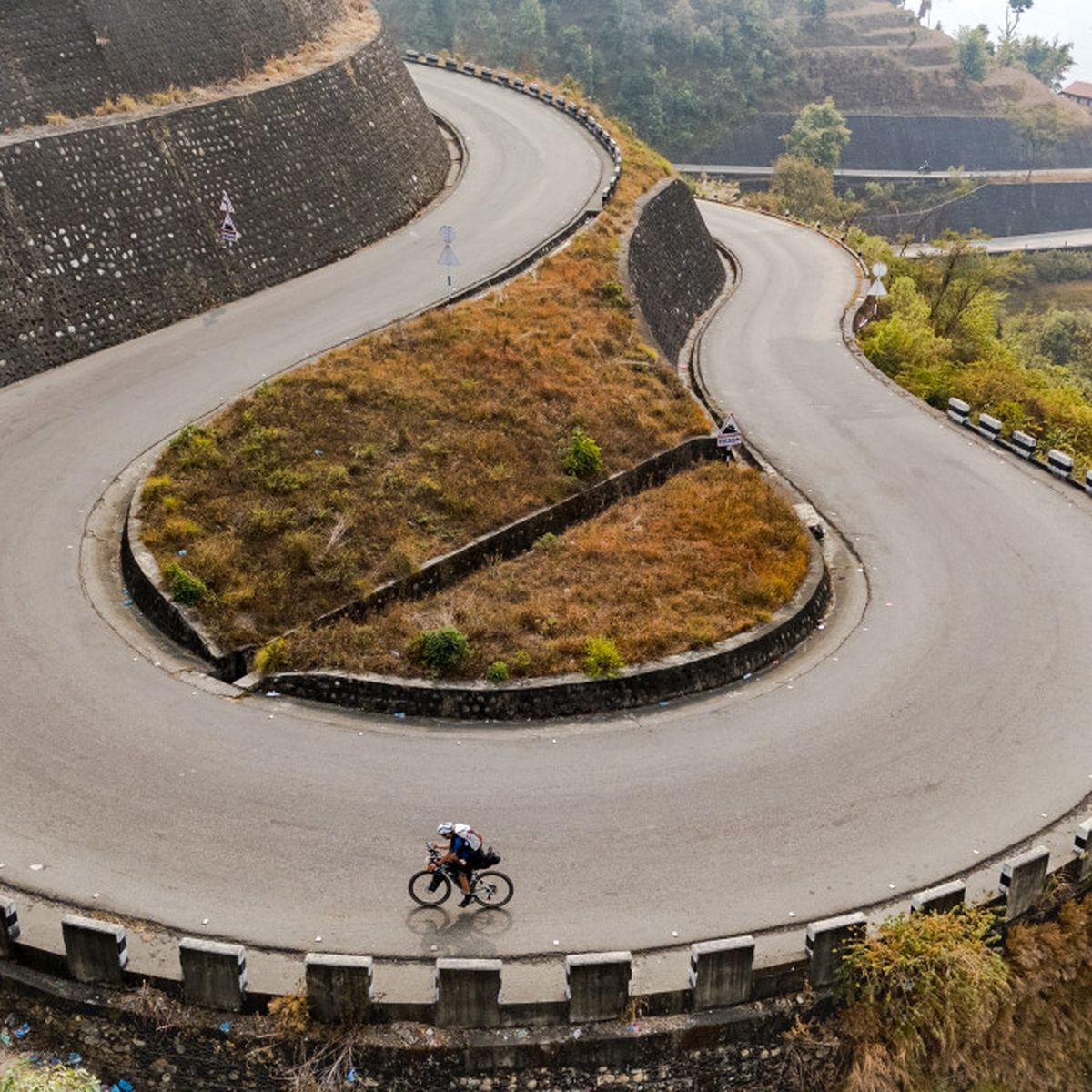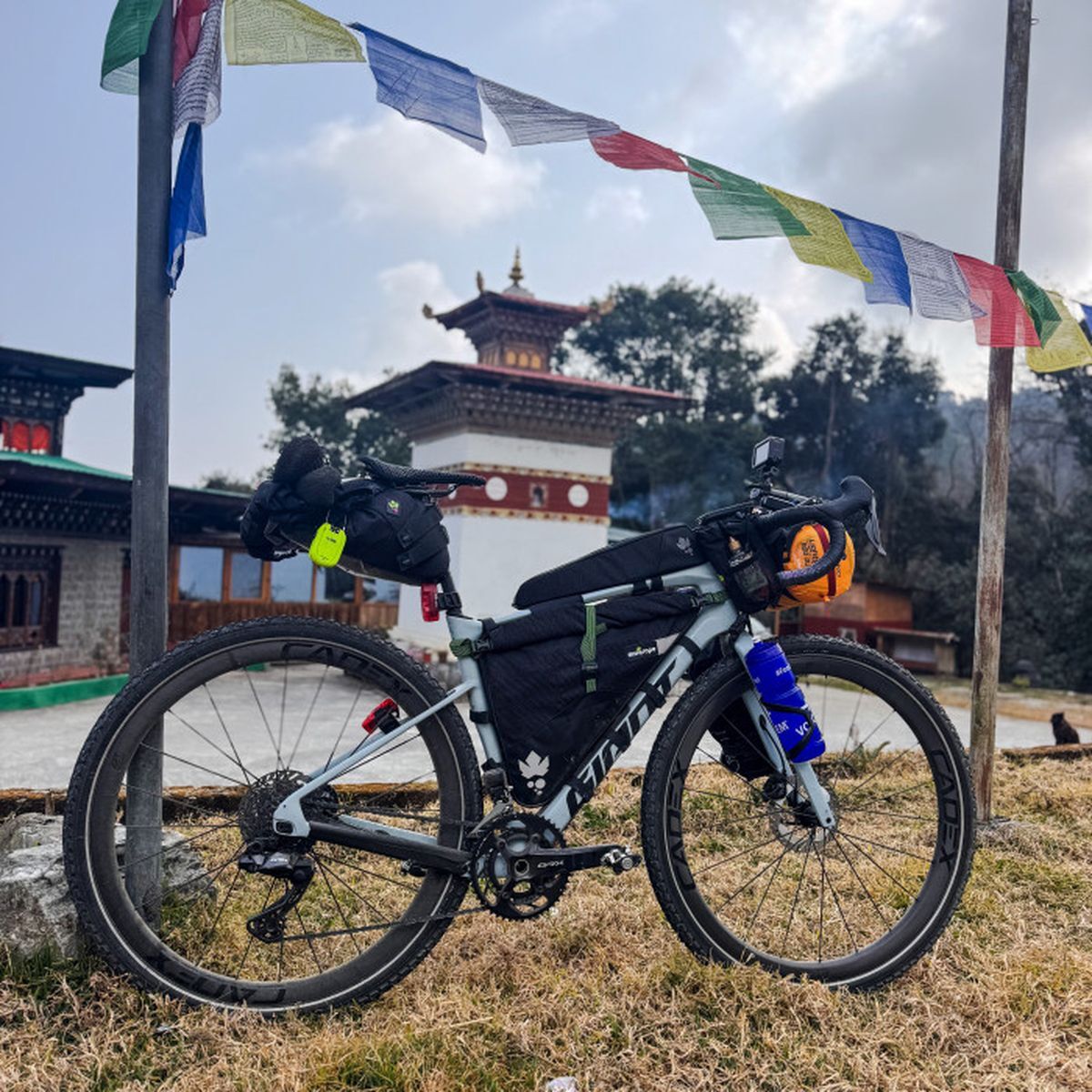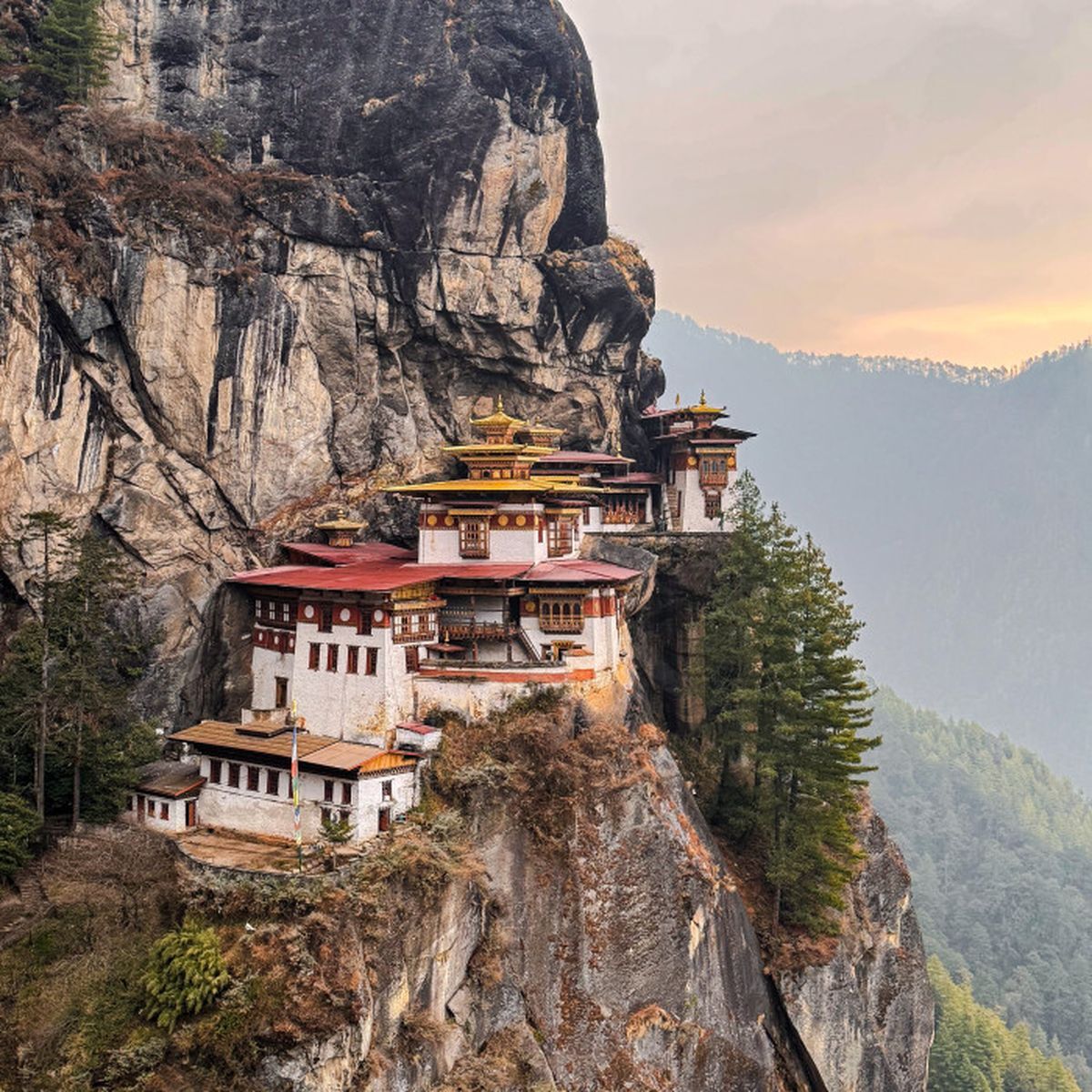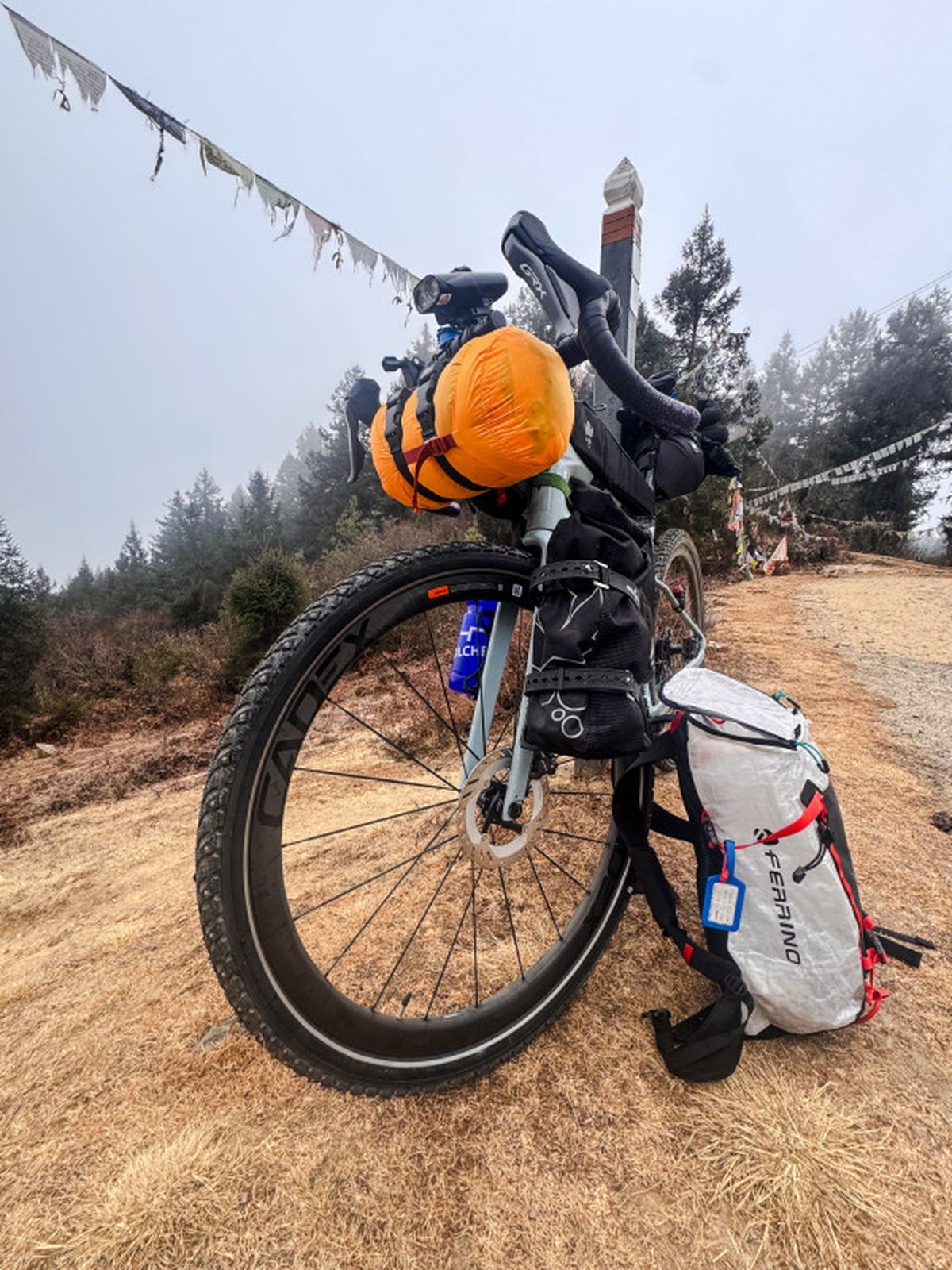
Bike to Happiness – Pedaling Above the Clouds, in Search of Happiness
We met Omar Di Felice, ultracyclist and Ferrino ambassador, after the conclusion of his latest undertaking: the Winter Transhimalaya. In 22 days, Omar traveled over 3,000 km and 50,000 meters of altitude difference through India, Bhutan, Nepal and Tibet, pedaling between passes at over 5,000 meters and very cold temperatures. A journey that was not only physical, but also spiritual and symbolic, part of the project “Bike to Happiness – Road to 1.5°C”, aimed at raising awareness of the climate emergency and the importance of sustainable happiness.
The Himalayas are a place you know very well and have already been to: what made you want to return to these places?
The Himalayas have always had a special place in my heart. After crossing Upper Mustang, climbing Thorung La and walking the Annapurna Trail to Everest Base Camp, I felt the desire to relive those emotions. This time, however, I wanted to combine adventure with cultural discovery, crossing countries such as Bhutan and Tibet, to rediscover the humanity and hospitality that characterize these lands.
What was the most difficult moment of the trip?
The difficulties were both logistical and physical. From a logistical point of view, crossing land borders between countries with complex bureaucracies was challenging. For example, between India and Nepal I spent an entire afternoon at customs, and between Nepal and China I risked being stuck for a missing stamp. Physically, entering Tibet was tough: being able to stay in the country for a limited period of time meant that I planned the stages tightly, without being able to make changes or delays to the timetable. Thus, in 24 hours I found myself going from 1,500 to over 4,000 meters of altitude, without the necessary time to acclimatize, dealing with headaches and insomnia.
Which country impressed you the most?
Without a doubt, Bhutan. It is a country where gross national happiness is not just a slogan, but a tangible reality. The population lives in harmony with nature, keeping traditions alive and showing a deep humanity. It is an example of how one can live well while respecting the environment and one's roots.
Bhutan as the start of your journey for the Gross National Happiness Index: What is the message behind your cycling venture?
Bhutan, with its Gross National Happiness Index, represents a model of society that puts the well-being of people and the environment at the center. Through this venture, I wanted to demonstrate that it is possible to live in connection with nature without giving up modern comforts. It is an invitation to reflect on how we can adopt a more sustainable and conscious lifestyle.
Your travels are a lot of altitude and many kilometers, but certainly there is never a lack of human contact. What were the people you met along the various stages like? Was there any meeting in particular that you want to tell?
Human contact is one of the most beautiful aspects of my travels. In every country I found welcome and kindness. However, in Tibet I perceived a certain distrust: people were reluctant to speak, probably for fear of the authorities. It was painful to see how such a rich culture was partly suffocated.
What advice would you give to someone who wants to take a similar trip?
Preparation and adaptability are key. Nepal and India are more accessible to independent travellers, while Bhutan and Tibet require special permits and often the accompaniment of guides. It is important to be well informed, respect local cultures and be prepared to handle unforeseen events, both logistical and climatic.
If you had to describe your trip with three adjectives, which ones would you use?
Silent : because I spent many hours immersed in nature, far from the chaos.
Welcoming : for the hospitality and kindness encountered along the way.
Steep : for the challenging climbs and altitudes I faced.

